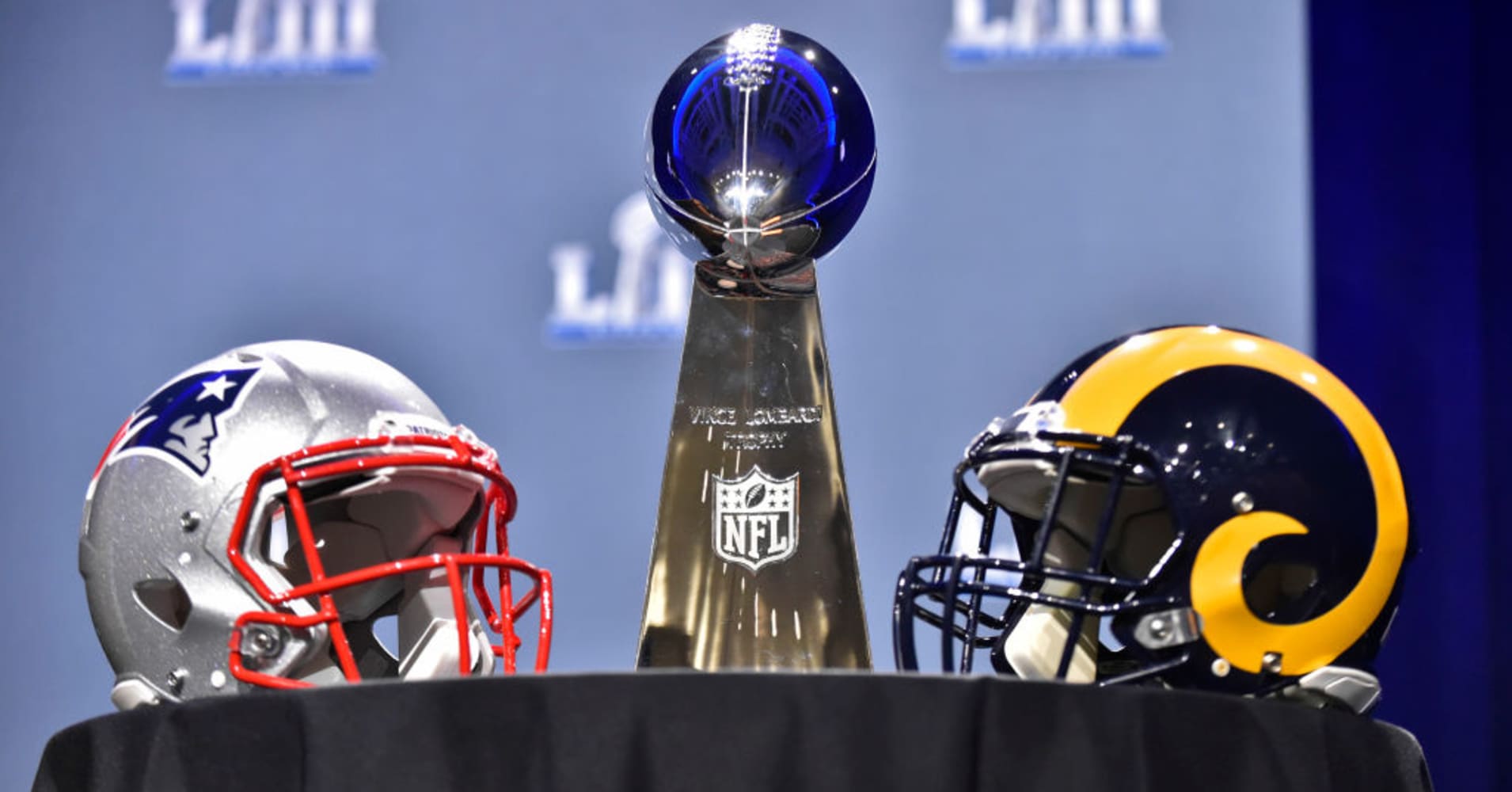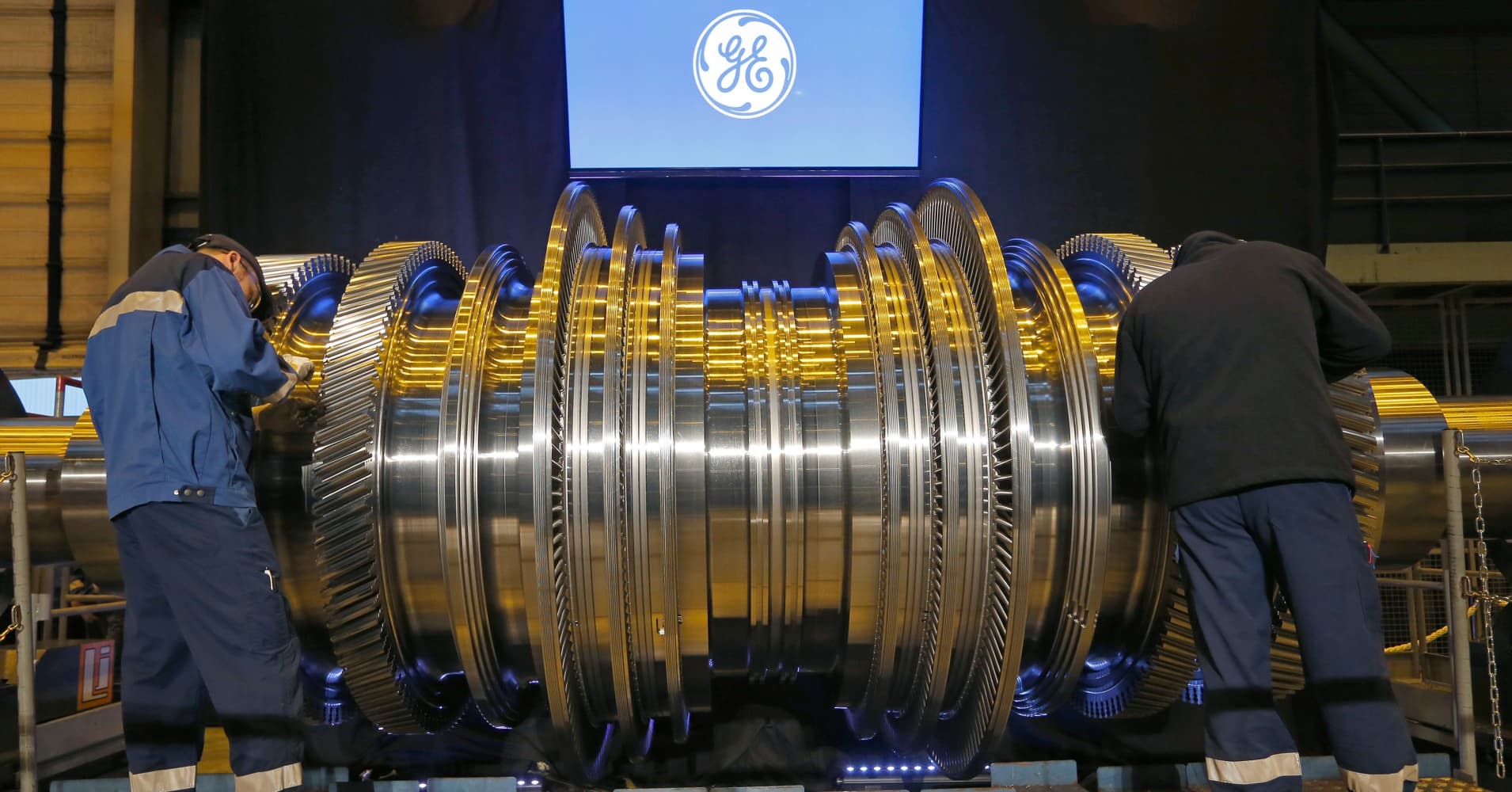
Super Bowl Sunday is almost upon us. The TV commercials are ready, the Bud Light is chilling, and the fans are getting into a frenzy ahead of the biggest football game of the year.
As the New England Patriots prepare to play the Los Angeles Rams at the Super Bowl, kicking off at 6.30 p.m. ET on February 3, retailers, broadcasters and sponsors will be waiting to cash in on the biggest sporting event in the U.S.
CNBC takes a look at who makes what.
The NFL will reportedly pocket tens of millions for Sunday’s game, but for more accurate figures it’s better to look at the season as a whole. The NFL does not disclose the value of its contract with TV networks to broadcast regular season football games, but it’s reported that CBS, Fox and NBC will pay around $3 billion a year collectively to do so, with a total of around $27 billion for the period 2013 to 2022. Each network gets the Super Bowl match to themselves three times over that period.
The NFL also doesn’t release detailed financial data, but one league team, the Green Bay Packers in Wisconsin, does break out its finances because it’s fan-owned. The Packers reported revenue of $454.9 million for the 2017 fiscal year, according to an income statement emailed to CNBC, and that included $255.9 million in “national revenue” that included TV rights money from the NFL itself, which shares money from TV deals equally among its 32 teams. If you multiply that national revenue figure by the 32 teams, that would equate to around $8 billion distributed to teams by the NFL each year.
The NFL also earns money from sponsorship deals (Visa renewed its partnership through 2025 on Tuesday, an alliance that started in 1995), with revenue to reach $1.39 billion in the 2018-19 football season as a whole, according to consultancy IEG in figures released Tuesday. This is up 5.9 percent on the previous season, and was driven by new sponsorships from companies including McDonald’s, Pizza Hut and Turbo Tax owner Intuit, IEG said.
On January 3, the NFL also signed up Caesars, its first casino partner, in a contract reportedly worth $30 million, and, as viewing habits continue to change, it has signed deals with Facebook for video content and Amazon Prime for streaming.
In previous years, football has seen controversy over players taking a knee during the National Anthem and in May 2018, the NFL said it would fine players who did not stand. However, recently the league has seen fewer issues, said Jeff Gagne, SVP of strategic investments at Havas Media. “This was a good year for the NFL— there were far less PR distractions than in recent years,” he said in an email to CNBC.
Super Bowl ad spots are the most expensive on commercial TV in the U.S. by far, with a 30-second slot costing $5.25 million. That works out at roughly $175,000 per second. Thirty-second ads during regular-season NFL games usually cost around $625,000, according to Kantar Media.
Of the three TV networks who alternate broadcasting the Super Bowl, CBS will show it this year. Total ad spend for pregame, in-game and post-game advertising during NBC’s Super Bowl broadcast last year was $482 million, according to Kantar. CBS has broadcast the Big Game the most times and 2019 marks its 20th year, and its official line at a January 10 press conference was that it was 90 percent sold on ad spend.
The network might take close to half a billion dollars in advertising for just one football game, contributing heavily to the overall annual amount it pays the NFL for the right to broadcast. According to Rick Burton, professor of sport management at Syracuse University’s Falk College of Sport and Human Dynamics, it will make a nice profit. “Ad spending has already gone up. It goes up every year. CBS will make money. The Super Bowl is one of the most profitable pieces of programming for the network,” he said in an email to CNBC.
Last year, the winners of the Super Bowl made an estimated $112,000 each, while their opponents made $56,000 each. Referees, meanwhile, make between $4,000 and $10,000 a game, according to an estimate by CBS, and their annual salary is about $201,000.
If you look at annual figures, the New England Patriots are reported to be worth $3.8 billion, while their opponents, the Los Angeles Rams, are worth $3.2 billion, according to Forbes.
For Sunday’s game alone, members of the winning team will receive $118,000 each, per the NFL’s collective bargaining agreement. Players on the losing team will each receive $59,000.
But both the teams have already earned $83,000 per player in postseason play, meaning each winner could go home with a total of $201,000 and each loser with $142,000.
Stores are set to make $14.8 billion in sales around the game, with most of that money spent on food and drink to consume while watching, according to a survey carried out by Prosper Insights & Analytics for the National Retail Federation last week. That equates to $81.30 per person, up from last year’s $81.17. But, as fewer people say they will watch the Super Bowl in 2019, retailers will make slightly less than last year’s total of $15.3 billion.
“The big game is a day for big spending regardless of who plays or wins,” Prosper Vice President of Strategy Phil Rist said in an online statement.
Walmart will air its “Grocery Pickup” 60-second commercial just before kick-off on Sunday, featuring famous movie cars like the Batmobile and DeLorean. It will be hoping that a chunk of that $14.8 billion spend will go through its registers this weekend and beyond.
The Super Bowl will be played at the Mercedes-Benz Stadium, home to the Atlanta Falcons team. Both are owned by parent company AMB Group, the investment arm of businessman Arthur Blank. The stadium, which opened in 2017, has raised close to $1 billion in sponsorship, a spokesperson confirmed to CNBC by email, but it does not break down financials.
Mercedes bought naming rights to the Falcons’ stadium in 2017, for a reported $324 million over 27 years (contributing to that $1 billion total). People flying into Atlanta’s Hartsfield-Jackson Airport won’t be able to miss it: the logo on the roof is “the biggest Mercedes-Benz logo on the planet” according to a blog post by Dieter Zetsche, chair of Mercedes-Benz owner Daimler.
While the car company might not be able to directly track its sponsorship to sales, naming the stadium is more about generating “love” for the brand, according to Dan Conti, director of Sports & Live and a partner at media group Wavemaker, in an email to CNBC.
“These deals are typically not directly correlated to product sales, but are instead about driving awareness, deepening brand love, and shifting perception.” Attaching its name to the Atlanta stadium also makes sense for the company, which moved its headquarters to the city in March 2018, but beyond that, the company will get huge exposure in the media.
Fans should expect to pay between $4,000 and $6,000 for a ticket to watch the game in person this year, according to Scott Jablonski, general manager of NFL for ticket reseller StubHub. And at the time of writing, the NFL’s official hospitality partner was selling hotel and ticket packages for $5,645 per person when sharing a room.
Advertisers will be shelling out close to $500 million to air their commercials during the Super Bowl, but what returns can they expect? Measurement company iSpotTV, which tracked sales against ad spend in 2018, found that the cost per lead (CPL), or the amount of money spent to convert a viewer into a buyer was between $27 and $100, on the day of the game. But the CPL went down significantly after a fortnight, to $3.41 for one big game advertiser it tracked.
For Burton, return on investment could be too hard to measure and instead brands should be focusing on return on objectives. “Half of the advertisers think they killed it, half of them will think they didn’t. But the bigger issue may be, will companies get a return on their objectives? Some companies want to sell more cars or more cheeseburgers which can be measured by a spike in sales,” he said in an email to CNBC. “Other companies are trying to increase awareness about their brand. Will all of these companies receive a return on their object? Most will believe they did.”
The massive music acts that perform during half time reportedly make zero cash for their efforts. Expenses and production costs are covered, but playing to such a massive audience reaps rewards. Maroon 5, who will perform Sunday, opted not to hold a news conference ahead of the big game, saying they would instead participate in a “social and digital media roll-out.” The band attracted controversy for its decision to perform, because of the NFL’s treatment of Colin Kaepernick, the former San Francisco 49ers quarterback who started kneeling during the national anthem in 2016.
Along with paid-up sponsors, official merchandisers and big-money teams, many other vendors will cash in on Sunday, Burton said, although it’s almost impossible to put a figure on it. “The joke is, every man and his dog is making money. The players make money, legal gambling is making money, illegal gambling is making money, the network makes money, the list is lengthy. Vendors on the streets selling t-shirts, Airbnb, people selling a parking spot in their backyard. This isn’t new, and for the last 45 years the Super Bowl has been a big deal and there are a lot of people familiar with how to monetize the event.”
—Disclosure: NBC and CNBC are owned by Comcast’s NBCUniversal unit.
.1549024078328.jpeg)







